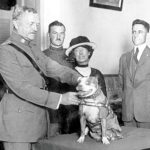Strange Victorian Marriage Customs We’d Consider Red Flags Today
- Gail Stewart
- May 19, 2025
 Getty Images
Getty ImagesThe Victorian era is often romanticised for its fashion, literature, and rigid formality. However, if you dig a little deeper into how people actually lived—especially how they married—and things start to look a lot less charming. Many customs that were perfectly acceptable (and even celebrated) in the 19th century would raise serious concerns today. From barely-there consent to creepy age gaps and controlling family influence, Victorian marriage traditions were riddled with what we’d now call red flags. Here are some of the more unsettling customs people took in stride back then.
Parental control over marriage choices
In many Victorian households, parents—particularly fathers—held enormous sway over who their children married. For daughters, marriage wasn’t just a romantic decision; it was a transaction. A suitable match often meant someone with social standing, money, or property. Love was secondary.
A woman who rejected a match could be seen as disobedient or even jeopardising her family’s reputation. Some families pressured or emotionally coerced their daughters into accepting proposals they didn’t want. While arranged marriages still exist in parts of the world today, the lack of autonomy many Victorian women had in choosing a partner would be considered deeply troubling by modern standards.
Marrying first cousins was surprisingly common
Marriage between cousins wasn’t just permitted—it was often encouraged, especially among the upper classes. It kept wealth within the family and maintained bloodlines that were seen as socially desirable. Queen Victoria herself married her first cousin, Prince Albert.
Today, cousin marriage is either frowned upon or legally restricted in many places due to concerns over genetics and social taboo. In the Victorian era, though, it was just another way to keep things “in the family.” What we now see as a potential health risk or ethical concern was, for many Victorians, a perfectly practical solution.
Girls could marry frighteningly young
While the legal age of marriage in the UK was 12 for girls and 14 for boys until the Age of Marriage Act 1929, which raised it to 16, many girls in the Victorian era were married off as teenagers. Even if most didn’t wed at the legal minimum, it wasn’t unusual for a girl of 15 or 16 to marry a man twice her age.
The power imbalance in these relationships was staggering. Young brides often lacked life experience, education, and any real say in the relationship. Today, such marriages would be considered exploitative, with serious concerns around consent and coercion.
A woman’s property became her husband’s
Until the Married Women’s Property Act of 1870—and later the stronger 1882 Act—everything a woman owned became her husband’s once they married. That included money, land, possessions, and even wages she earned after the wedding. Essentially, she ceased to exist as a legal entity.
This meant that husbands could legally control their wives’ assets and spend them however they liked. If the marriage broke down, a woman had very little recourse. These laws were gradually reformed thanks to feminist campaigners, but for much of the Victorian period, marriage was a legal surrender of autonomy.
A husband’s word ruled the home
Once married, a Victorian woman was expected to obey her husband without question. Marriage vows included the promise to “love, honour, and obey,” and that wasn’t just ceremonial—it reflected the law. The man was considered the head of the household, and his decisions were final.
This included control over where they lived, how money was spent, and even whether his wife could leave the home unaccompanied. The idea of mutual respect or shared decision-making in marriage was not the norm. Today, this kind of dynamic would raise all sorts of alarm bells.
Divorce was outrageously hard to get—especially for women
Before the Matrimonial Causes Act 1857, divorce could only be granted by a private Act of Parliament, making it nearly impossible for ordinary people. Even after the law changed, it remained far easier for men to file for divorce than women.
A man simply had to prove adultery. A woman, however, had to prove adultery plus an additional offence—like cruelty, incest, or desertion. Women who sought divorce were often socially ostracised, and they risked losing custody of their children. Staying in a miserable marriage was seen as preferable to causing a scandal.
Marital rape wasn’t a crime
One of the most disturbing aspects of Victorian marriage law was that once a woman married, her consent was considered permanently given. A husband could not legally rape his wife, no matter her wishes. The idea was that marriage implied ongoing sexual access.
It wasn’t until 1991 that marital rape was made a crime in England and Wales. But during the Victorian era, this kind of abuse was not only legal but largely invisible. Wives had little legal or social protection against coercion within marriage.
Husbands could have mistresses, but wives couldn’t complain
Infidelity wasn’t exactly rare, but it was only scandalous if a woman did it. A Victorian man who had a mistress might face some disapproval, but it rarely ruined his social standing. A woman caught in an affair, on the other hand, risked total social ruin.
Double standards ruled. Men’s extramarital behaviour was treated with winks and shrugs; women’s was condemned outright. A wife had no legal grounds to stop her husband’s affairs and could be blamed even when he strayed. By today’s standards, this imbalance in expectations would be seen as profoundly unfair.
Engagements were legally binding
Victorian engagements weren’t just promises—they were contracts. Breaking off an engagement could lead to a lawsuit for “breach of promise.” A jilted woman could sue a man for damages if he changed his mind, especially if she had suffered social embarrassment or lost other prospects.
While this might seem like a protection for women, it also reflected how transactional marriage was. A broken engagement wasn’t viewed as a change of heart—it was a violation of social expectations, often settled in court like a broken business deal.
We’ve come a long way
Victorian marriage customs might be fascinating from a historical perspective, but they’re also a reminder of how far we’ve come—and how much was wrong with the romanticised past. So many of the rules and rituals were rooted in control, inequality, and social pressure.
Marriage was less about partnership and more about property, reputation, and survival. And while love certainly existed within those marriages, the system itself left little room for personal freedom or fairness—especially for women. When we look back at these customs today, it’s clear that many would be seen not just as outdated, but downright disturbing.



